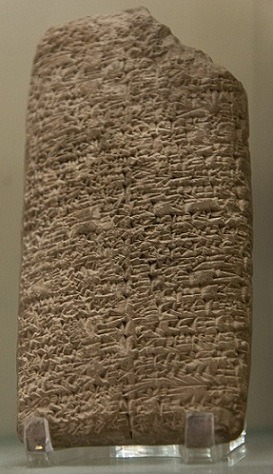Copy of Utu-hengal’s victory stele describing his victory overTirigan, king of Gutium (c.
Copy of Utu-hengal’s victory stele describing his victory overTirigan, king of Gutium (c. 2119 BC).“Gutium, the serpent, the mountain scorpion…had taken thekingship of Sumer abroad. He had taken his wife from the one who hada wife…he had installed wickedness and violence in the land. [Thegod] Enlil, the king of all countries, in Utu-hengal, the strong man,the king of Uruk, the king of the four regions…gave the mission toannihilate the name of Gutium…So Tirigan fled on foot, all alone. In the place where he took refuge in Dubrum, he found favour, but thepeople of Dubrum, having learned that Utu-hengal was the king to whomEnlil had given power, did not liberate Tirigan…[who] lay down atthe feet of Utu-hengal. [Utu-hengal] put the foot on his neck…Herestored the kingship to Sumer.”The Gutians invaded Sumer from the north (modern-day Iran) in c. 2154BC, driving out the ruling Akkadians. The Gutian Period isconsidered a dark age in Mesopotamian and Sumerian history. LaterSumerian writers of history reviled the Gutians, and many consideredthem to be a punishment from the gods.This clay stele is inscribed with the Akkadian language, using the Sumerian cuneiform system. -- source link
Tumblr Blog : mostly-history.tumblr.com
#history#military history#politics#languages#writing#gutian period#akkadian period#mesopotamia#sumer#gutians#akkadian empire#iraq#utu-hengal#tirigan#akkadian language#cuneiform#akkadian cuneiform
